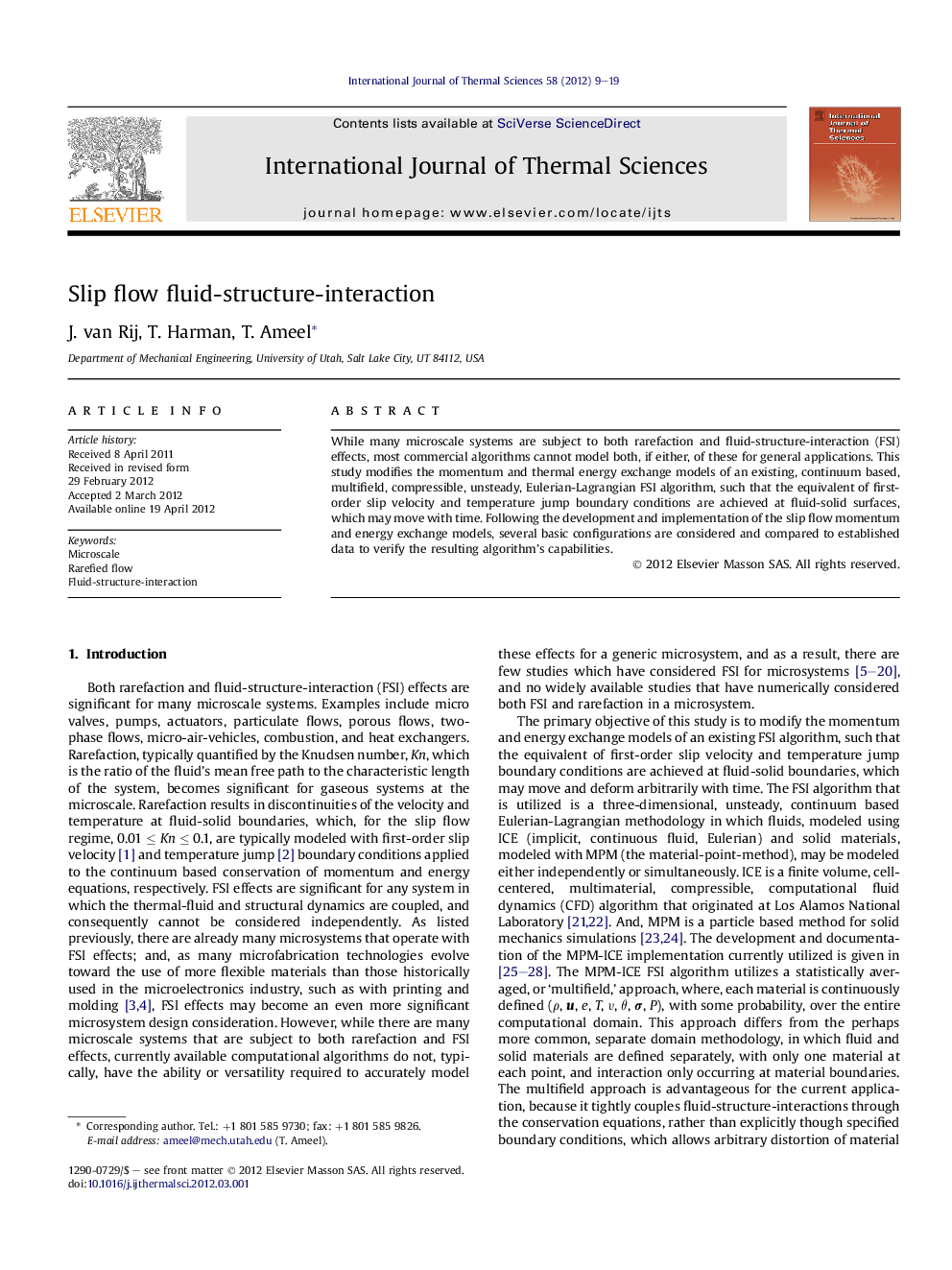| Article ID | Journal | Published Year | Pages | File Type |
|---|---|---|---|---|
| 668655 | International Journal of Thermal Sciences | 2012 | 11 Pages |
While many microscale systems are subject to both rarefaction and fluid-structure-interaction (FSI) effects, most commercial algorithms cannot model both, if either, of these for general applications. This study modifies the momentum and thermal energy exchange models of an existing, continuum based, multifield, compressible, unsteady, Eulerian-Lagrangian FSI algorithm, such that the equivalent of first-order slip velocity and temperature jump boundary conditions are achieved at fluid-solid surfaces, which may move with time. Following the development and implementation of the slip flow momentum and energy exchange models, several basic configurations are considered and compared to established data to verify the resulting algorithm's capabilities.
► Many microscale systems are subject to both rarefaction and FSI effects. ► A FSI code is revised with slip velocity and temperature jump boundary conditions. ► The FSI code is verified with numerical, experimental and analytical data.
